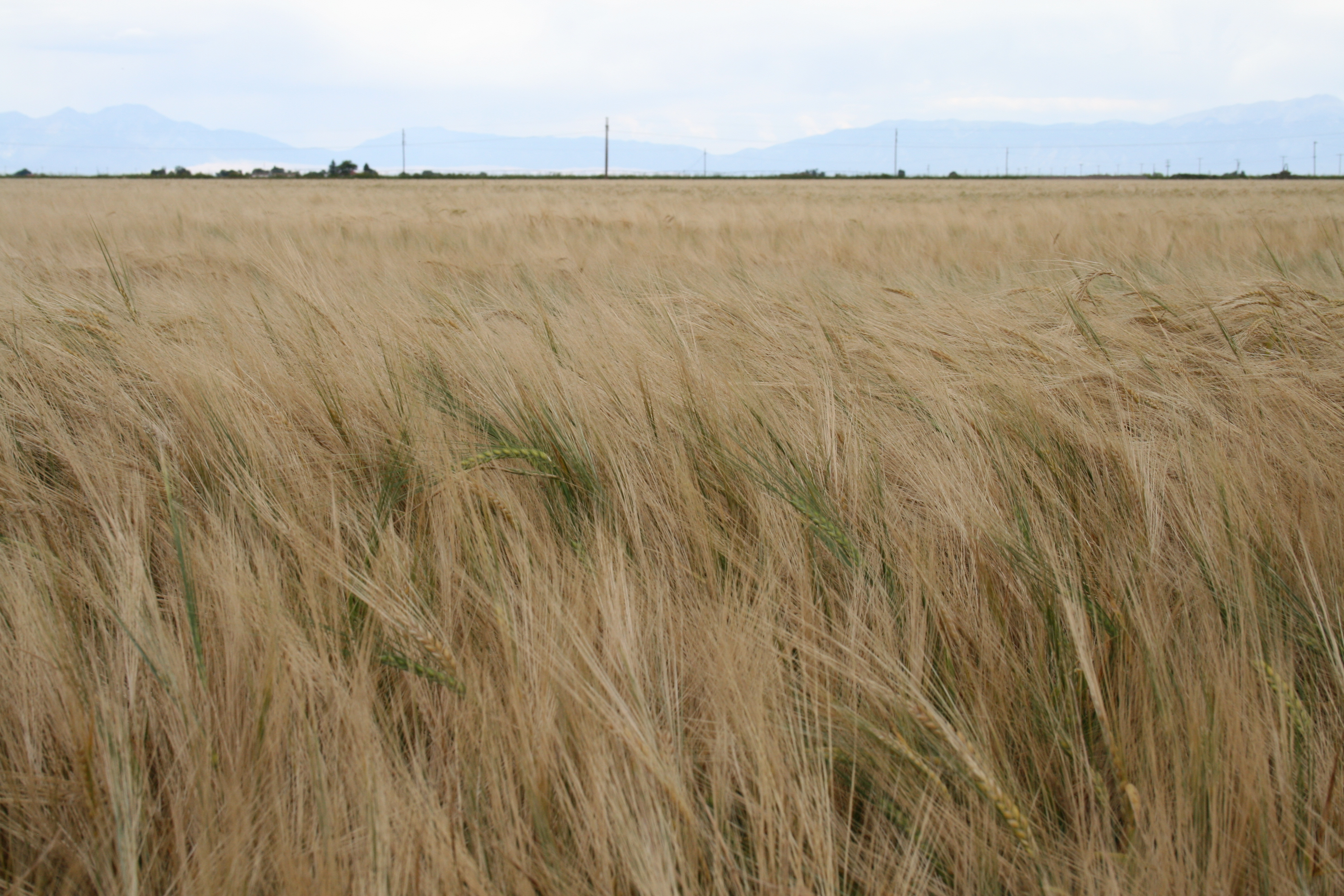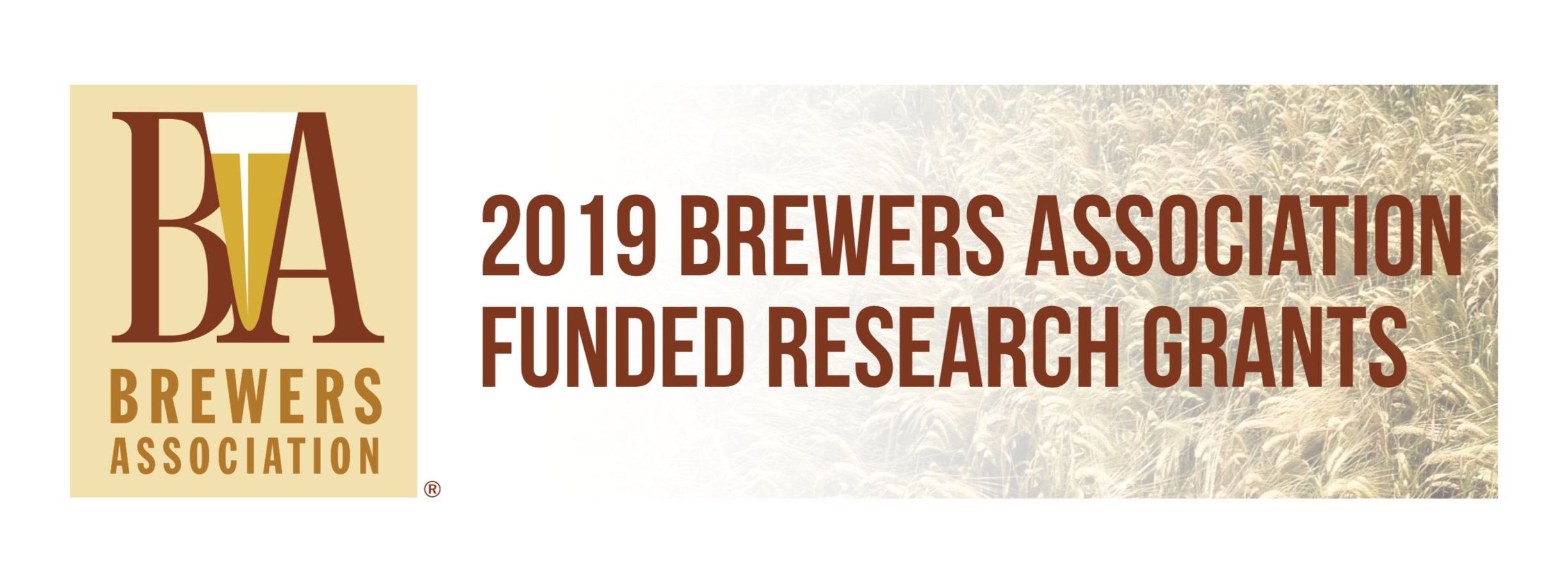Brewers Association Awards 2019 Research Grants

Boulder, Colo. • January 3, 2019—The Brewers Association (BA)—the not-for-profit trade association dedicated to small and independent American brewers—today announced the recipients of its 2019 Research and Service Grants Program, designed to further the development of a healthy and sustainable raw materials supply chain. This year, 17 grants totaling $509,058 were awarded to researchers and organizations across the country.
“Ensuring a healthy supply chain is critical for our members,” said Bob Pease, president & CEO, Brewers Association. “As the agricultural landscape weathers a number of challenges, the Brewers Association is proud to fund grants that will enhance beer production and enable a more sustainable future.”
The BA has provided more than $1.7 million in funding for 77 projects since the inception of the grant program in 2015. Funding has supported research and service grants addressing public barley and hop variety development, hop disease and hop aroma, as well as supporting affiliated national and state-level grower organizations.
“We are grateful to the Brewers Association for the grant ‘Stable and Sustainable Dryland Production of High Quality Malt Barley’ to Montana State University,” said Dr. Jamie Sherman, assistant professor, Plant Sciences and Plant Pathology, Montana State University. “The support of the Brewers Association will enable the creation of barley lines with high malt quality under dryland conditions. Ultimately, the grant will increase sustainable production of barley by reducing water use. Dryland production is important to the long-term security of the barley supply chain particularly for Montana where 80 percent of available acres are dryland.”
2019 Grant Recipients (please see complete summary here: PDF)
Barley
Building a Winter Malting Barley Market for the Great Plains
- Partner(s): University of Nebraska-Lincoln
- Principal: Stephen Baenziger
Characterization of Genotype by Environment Interaction for Malting Quality in New York State
- Partner(s): Cornell University Department of Plant Breeding and Genetics
- Principal: Mark Sorrells
Stable and Sustainable Dryland Production of High-Quality Malt Barley
- Partner(s): Montant State University
- Principal: Jamie Sherman
Interaction Between Barley Genetics and Malt Process Impact on Flavor
- Partner(s): Montana State University
- Principal: Hannah Turner
Winter and Spring 2-Row Malt for Conventional and Organic Systems
- Partner(s): Montana State University
- Principal: Jed Eberly
Improving Malting Quality in Two-Rowed Barley by Reducing Grain Protein and β-Glucan Content Through Marker Assisted Backcrossing
- Partner(s): University of California, Davis
- Principal: Alicia del Blanco
Development of Two and Six-Rowed Winter Malt Barley Varieties for the Eastern U.S.
- Partner(s): Virginia Polytechnic Institute and State University
- Principal: Carl Griffey
Evaluating a Multi-State Breeding Project to Produce Local Malting Barley for the Craft Brewing Industry
- Partner(s): University of Minnesota
- Principal: Kevin Smith
The Continuing Quest for Flavor: From the Oregon Promise to the Romp of Otters
- Partner(s): Oregon State University
- Principal: Pat Hayes
Enhancement of Winter Hardiness in Two-Rowed Barley Germplasm for the Craft Brewing Industry
- Partner(s): University of Minnesota
- Principal: Brain Steffenson
Identifying Spring Malting Barley Varieties for the Craft Brewing Industries
- Partner(s): North Dakota State University
- Principal: Richard Horsley
Effects of Variety by Malting Interactions on the Malt and Beer Metabolome
- Partner(s): Colorado State University
- Principal: Adam Heuberger
Metabolomics and Genomics Analysis of the ‘Romp of Otters’ Barley Flavor Project
- Partner(s): Colorado State University
- Principal: Adam Heuberger
Hops
Multifaceted Impacts of Nitrogen and Sulfur Fertility on Hop Productivity, Quality, and Brewing Characteristics
- Partner(s): US Department of Agriculture; Oregon State University
- Researcher: David Gent
Mapping Novel Loci for Powdery Mildew Resistance in Hops
- Partner(s): University of Minnesota
- Principal: Gary Muehlbauer
Development and Application of Cost-Effective DNA-Based Markers for Hops
- Partner(s): USDA-ARS National Clonal Germplasm Repository
- Principal: Nahla V. Bassil
Development of Thiols and Thiol Precursors in Different Hop Varieties During Hop Harvest and their Impact on Beer Flavour
- Partner(s): Nyseos, Barth-Haas Group
- Researcher: Laurent Dagan, Christina Schoenberger
Proposals for 2020 calendar year funding will be accepted from March 1, 2019 until May 31, 2019 and can be submitted on the Brewers Association website.
About the Brewers Association
The Brewers Association (BA) is the not-for-profit trade association dedicated to small and independent American brewers, their beers and the community of brewing enthusiasts. The BA represents more than 4,800 U.S. breweries. The BA’s independent craft brewer seal is a widely adopted symbol that differentiates beers by small and independent craft brewers. The BA organizes events including the World Beer Cup®, Great American Beer Festival®, Craft Brewers Conference® & BrewExpo America®, SAVORTM: An American Craft Beer & Food Experience, Homebrew ConTM, National Homebrew Competition and American Craft Beer Week®. The BA publishes The New Brewer® magazine, and Brewers Publications® is the leading publisher of brewing literature in the U.S. Beer lovers are invited to learn more about the dynamic world of craft beer at CraftBeer.com® and about homebrewing via the BA’s American Homebrewers Association® and the free Brew Guru® mobile app. Follow us on Facebook, Twitter and Instagram.
The Brewers Association is an equal opportunity employer and does not discriminate on the basis of race, color, national origin, gender, religion, age, disability, political beliefs, sexual orientation, or marital/familial status. The BA complies with provisions of Executive Order 11246 and the rules, regulations, and relevant orders of the Secretary of Labor.

